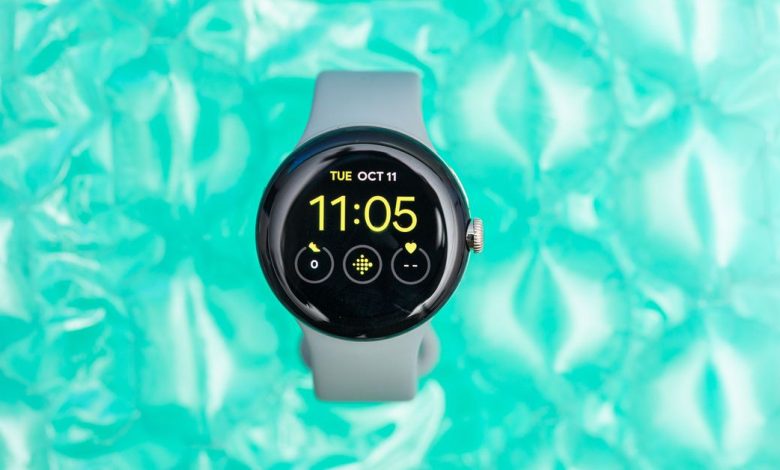The Pixel Watch exceeded expectations — now it needs to be as good as Samsung

[ad_1]
After I reviewed the Pixel Watch last year, skeptics kept asking me the same questions over and over again: Do you think Google’s actually going to keep this thing going? Do you think it’s going to ax the Pixel Watch if it doesn’t sell?
These are fair questions to ask. Despite being among the first to the wearable scene in 2014, it let Android Wear and then Wear OS languish for years. Plus, Google’s graveyard of abandoned projects is notoriously vast. While I was pretty confident we’d see a Pixel Watch 2, I didn’t think the Pixel Watch — a better-than-expected debut with some very first-gen flaws — would succeed to the degree it did. During Q4 2022 (aka the holiday season), Google leapfrogged Samsung to become the No. 2 bestselling wearable maker behind Apple, shipping 880,000 units.
But the question remains. Can Google keep the momentum going?
Now would be the best time to prove that it can. Apple and Samsung have already launched their 2023 flagship smartwatches — and while all are excellent, they’re the definition of iterative. Both companies are long-term players in this field, too. Each new Apple Watch or Galaxy Watch is a refinement of the last. As a newcomer, Google has a lot more room to grow.
On the flip side, the Pixel Watch’s flaws were easier to forgive because it was a debut smartwatch. It’s a rare gadget that knocks it out of the park on a first attempt. It didn’t help that last year’s Google wearable lineup was a confusing jumble of three smartwatches. To differentiate between the Pixel Watch, Fitbit Versa 4, and Fitbit Sense 2, Google nerfed the Pixel Watch’s health features and the Fitbit smartwatches’ previously available smart features. Battery life at launch was also the pits. You could only get the estimated 24 hours if you babied the battery and turned the always-on display off.
Some of this has since been addressed in subsequent software updates. But the Pixel Watch 2 is an opportunity to show that Google not only listened to feedback but also dealt with it. If it doesn’t, it’s harder to turn a blind eye to known issues on a sophomore attempt, especially since there’s no reason it shouldn’t be able to improve battery life, expand health features, and deliver a better user experience. Google has a decade’s worth of rival smartwatches to draw inspiration from. Unlike Apple or Samsung, Google doesn’t have to revolutionize smartwatches to drum up excitement around the Pixel Watch 2. It just has to be noticeably better than last year’s.
Really, it only has to deliver a similar experience to the Galaxy Watch 6. Samsung and Google have both given up on winning over iOS users because their Wear OS watches are Android only. So this is to see who reigns over the incredibly fragmented Android smartwatch market.
For the past 10 years, Samsung has been the de facto leader partly because it had solid products and partly because everyone else was a hot mess. This is in spite of the fact that some of its health features, like EKGs, are gatekept to Samsung phone users. Fossil watches, while prolific, have always been design-first, with middling smarts and health features second. Garmins served a specific niche of outdoorsy athletes. Mobvoi had a decent shot with loyal TicWatch fans until it fumbled the transition to Wear OS 3. Huawei watches, while good, have been stymied by trade bans. Montblanc watches cost $1,000.
It would not take a lot for Google to own this space. It’s already succeeding in convincing third-party makers to hop aboard the Wear OS train. Xiaomi is the latest to ditch a proprietary OS for the platform with its newly announced Watch 2 Pro. The allure of the Play Store is just too strong. (Speaking of which, Google’s been hard at work getting third-party app developers to actually buy in.) So long as the Pixel Watch 2 doesn’t fall on its face, the pressure is on for Samsung to show everyone something they haven’t seen before. And that’s a lot harder to do.
For all these reasons, a lot is actually riding on the Pixel Watch 2 when it’s unveiled on October 4th. A success won’t put Samsung down for the count, but it will make my job (and many others) of picking the best Android smartwatch a lot harder. A flop… well, that just adds more fodder for Google’s reputation as a company with big ideas and no follow-through.
[ad_2]




